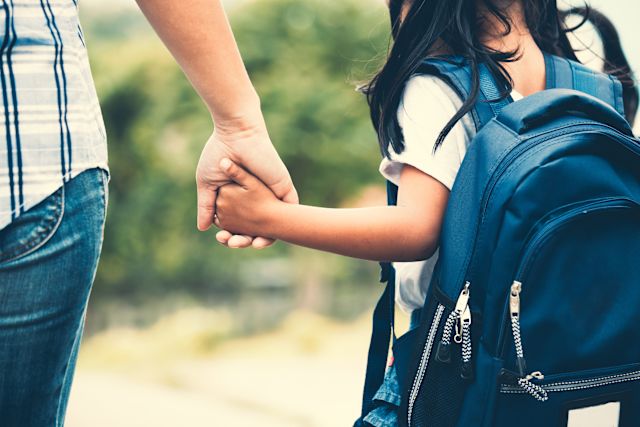Updated on October 4, 2024.
Between jam-packed lunches, heavy textbooks, and school supplies, your child’s backpack can get full pretty fast. But before they trudge to the bus, you may want to eliminate some of that excess material. Between 2017 and 2019, approximately 7,500 kids 19 and younger were treated in emergency departments for injuries related to backpacks, according to the U.S. Consumer Product Safety Commission (CPSC).
"The most common injuries are muscle strains of the neck, shoulder, and back," says Abdurrahman Kandil, MD, an orthopedic surgeon with Leesburg Orthopedics in Dulles, Virginia.
Overloaded bags are also responsible for some adolescent back pain, which can increase the likelihood of chronic back pain in adulthood. Read on for tips on how to lighten the load—and help avoid premature trips to the orthopedist.
Long-term problems with backpacks
There are a number of reasons your child might experience pain or injury due to a book bag. Perhaps it’s packed improperly, worn on one shoulder, or is simply too hefty. (Contact sports, poor posture, or inactivity can contribute to pain problems, as well.)
Although backpack-related strains aren't typically long-lasting, children who tote heavy backpacks for an extended period of time may develop poor posture, which can linger for years, according to Dr. Kandil. A well-fitting backpack can help alleviate this problem.
Carrying a pack improperly or lugging one that's too bulky can also put extra pressure on a child's developing spine. Experts don’t agree on exactly how much book bags should weigh, but as a general rule of thumb, a bag tends to cause discomfort when it’s more than 10 percent of a child's body weight. Research shows that carrying more than that can cause posture problems, including changes in spinal curve when kids lean forward to offset the weight of the backpack.
It’s worth noting, though, that not all spine curvatures in young children are the result of heavy bags, according to the American Academy of Orthopedic Surgeons. And backpacks—no matter how heavy—do not lead to scoliosis, a sideways curve of the spine that sometimes runs in families.
Expert-approved ways to prevent injury
Backpack-related injuries aren't inevitable, but preventing pain takes a bit of preparation. Try these tips:
Buy the right book bag
When you're shopping, there are a few features to keep in mind. Backpacks should be lightweight and equipped with a cushioned back and two thick, padded straps.
"Sometimes we see numbness or tingling associated with very thin straps," Kandil says. This tends to occur if there's a lot of weight focused on a small area of a child's shoulder. Kandil also recommends investing in a pack with a waist strap, which helps keep it closer to the body and decreases the load on your child's back. Multiple compartments can help distribute the weight in the bag, too.
Pack it properly
A lighter backpack is always better, but "evenly distributing the weight decreases the amount of strain to the neck, shoulder, and back muscles," says Kandil. Make sure to use all of the bag's compartments. If your young one must transport heavy items, like bulky textbooks, position them in the middle of the bag, near the bottom.
Know when it's too heavy
Even if it's packed to perfection, a heavy knapsack can still be dangerous. Weight recommendations for your child’s backpack vary between 5 to 20 percent of their body weight. The American Academy of Pediatrics (AAP) puts a safe load between 10 and 20 percent of a child's total weight, while the American Chiropractic Association (ACA) suggests no more than 10 percent.
It's best to keep things as light as possible, though, so use the bathroom scale as your guide. Clean the bag out weekly with your child to help prevent overloading.
Sport it just right
Encourage your young one to use both shoulder straps and the waist buckle. Tighten the pack so the bottom of the bag sits at the waist.
"The general recommendation is not to have the lower part of the backpack hanging more than 4 centimeters below the waistline," Kandil says. To avoid strain, he also recommends picking up the pack by bending at the knees rather than the waist and using both hands when doing so.
Although they can seem like a tempting solution, rolling backpacks may be ineffective at preventing injury, since many children carry them the wrong way when going up and down stairs. Using rolling bags in a crowded hallway can also pose a tripping hazard.
"My general recommendation is to wear an appropriately sized, lightweight, well-padded backpack on two straps with a waist belt," Kandil says.
Communicate
Let your kids know they should talk to you if their backpack feels uncomfortable or starts to cause aches and pains. If the pain doesn't improve after you've taken steps to ease it, reach out to a healthcare provider.
Packing a lightweight backpack with these tips can help kids manage their school load effectively and healthfully.







